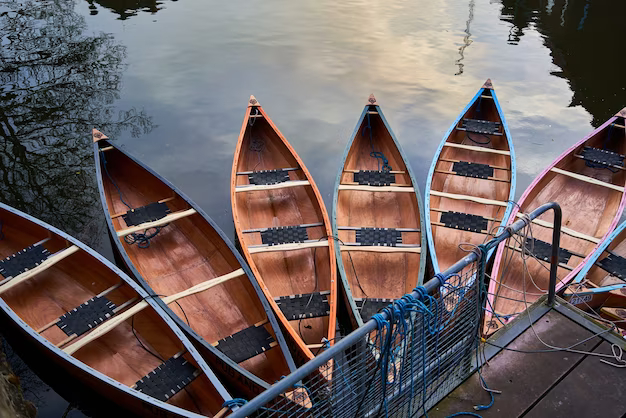
Rowing, known for its rigorous intensity and synchronized teamwork, has ancient origins and a rich history. This comprehensive article will journey through the emergence of rowing as a sport, from its beginnings in Ancient civilizations, its development in the United Kingdom, its spread to the United States and other parts of the world, and its inclusion in modern Olympic Games.
2. Ancient Beginnings
Rowing, as an act of propelling boats using the power of human strength, has been around for thousands of years, with the earliest physical evidence dating back to ancient Egypt around 1430 BC. The boats were not only used for transportation and fishing but also in military maneuvers and funerary rites.
Despite these early instances, it wasn’t until much later that rowing developed into a sport. The distinction is important: rowing for practical purposes such as transport or fishing is distinct from rowing as a sport, where individuals or teams compete against each other for speed.
3. Emergence in the United Kingdom
The birthplace of competitive rowing as we know it today is England. The first known rowing race occurred in London on the River Thames in the early 18th century. The race was between professional watermen who worked as ferry operators, transporting passengers across the River Thames.
In 1715, a competitive event known as “Doggett’s Coat and Badge” was initiated for Thames watermen. The tradition of this race continues to this day, making it the oldest rowing race in the world.
By the 19th century, rowing had become a popular sport among the aristocracy. Oxford University and Cambridge University started their annual rowing competition in 1829, and the Henley Royal Regatta, an annual event that attracts international rowing crews, was first held in 1839.
4. Expansion to the United States and Beyond
Rowing made its way across the Atlantic to the United States in the early 19th century. The first American collegiate boat club was established at Yale University in 1843. The Harvard-Yale Regatta, the United States’ oldest intercollegiate athletic competition, had its inaugural race in 1852.
By the mid-19th century, rowing clubs were established in other parts of the world, including Australia, New Zealand, Canada, and various European countries.
5. Rowing and the Olympic Games
Rowing has been a core part of the modern Olympic Games since their inception. The sport was scheduled to be included in the first modern Olympic Games in 1896, but the competition was cancelled due to poor weather conditions.
Men’s rowing officially debuted at the 1900 Paris Olympics, while women’s rowing events were included much later, in the 1976 Montreal Olympics.
Today, 14 rowing events are contested at the Olympic Games, seven for men and seven for women, including single sculls, double sculls, quadruple sculls, coxless pair, coxless four, eight, and lightweight double sculls.
6. Evolution of Equipment and Technique
Rowing equipment and techniques have evolved significantly over time. Early rowing boats, or shells, were made of wood. However, the mid-20th century saw a shift to synthetic materials, starting with aircraft-grade aluminum and then moving to carbon fiber, which is used in contemporary shells.
Rowing technique has also seen significant development. The modern rowing stroke consists of the catch (where the oar blade is placed in the water), the drive (where the rower applies power to the oar), the finish (where the oar is removed from the water), and therecovery (where the rower returns to the starting position to begin a new stroke). This technique, while refined over the years, maintains the core principles developed over centuries of rowing.
7. Modern-Day Rowing and Its Future
Today, rowing is a popular sport worldwide, both at a competitive and recreational level. It continues to hold significant prestige at a collegiate level, particularly in countries like the United Kingdom and the United States. In addition, indoor rowing has gained popularity thanks to the development of the rowing machine, which allows people to train and compete in rowing without needing access to water or a boat.
The sport is regulated internationally by FISA (Fédération Internationale des Sociétés d’Aviron) or the International Rowing Federation in English. Established in 1892, FISA not only oversees international competitions but also sets standards for all aspects of the sport.
Rowing has also seen recent growth in Paralympic competition with the introduction of adaptive rowing events for athletes with disabilities. These events first appeared in the Paralympic Games in 2008.
Looking ahead, the future of rowing as a sport seems promising. Advances in technology are creating ever more efficient and faster boats. The increased understanding of human physiology and sports science is also improving training techniques. Moreover, there is growing interest in environmentally friendly sports, and rowing, being a non-polluting, sustainable sport, fits the bill perfectly.
| Period | Key Developments |
|---|---|
| Ancient Era | Use of rowing for transportation and military purposes in ancient Egypt |
| 18th Century | The first known competitive rowing race on the River Thames; “Doggett’s Coat and Badge” race established |
| 19th Century | Rowing becomes popular among the aristocracy in England; Oxford-Cambridge rowing competition starts; rowing spreads to other countries |
| Early 20th Century | Rowing included in the Olympic Games; women’s rowing becomes more prevalent |
| Mid-20th Century | Transition to synthetic materials in boat construction |
| Late 20th Century to Present | Indoor rowing becomes popular; adaptive rowing events introduced in Paralympic Games; continuous improvement in technology and training techniques |
8. Conclusion
Rowing is a sport with a deep and storied history, evolving from ancient transportation means to a highly competitive modern sport. It has adapted with the times, embracing new materials and training methods, and expanding to include women and athletes with disabilities. As we look to the future, the sport of rowing seems set to continue its legacy of competition, endurance, and evolution.